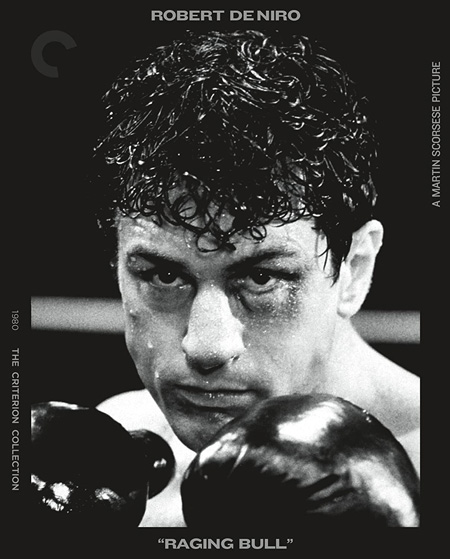
“A
TRIUMPH OF BRUTALITY”
By
Raymond Benson
I
once lived on the Upper East Side of Manhattan in the 1980s. Occasionally, I
would spot Jake LaMotta in the neighborhood. The former boxer must have lived
nearby or had reason to visit sometimes. One day as I was walking along 1st or
2nd Avenue, I spotted LaMotta coming toward me. As he passed me, I quietly (but
loud enough for him to hear) spoke in that whispery kind of voice that imitated
a “crowd noise.” I said, “Jaaaaake LaMoooooottaaaa!” in the style of a boxing
announcer. LaMotta turned to me with a frown. At first I thought he was going
to punch me or something. But then he grinned, clasped his hands together in a
self-clasping handshake that is a gesture of triumph and victory, and waved them
over his head. It was a special moment.
That
gesture of triumph from LaMotta is indicative of the man’s redemption he
received from the biopic about his life that was released in 1980. Raging
Bull, brilliantly directed by Martin Scorsese and superbly acted by Robert
De Niro, Joe Pesci, and Cathy Moriarty, is indeed a feat of greatness. LaMotta
(played by De Niro), who was a middle-weight champion boxer active professionally
between 1941 and 1954, is depicted as a troubled soul who cannot control his
anger—his rage—and this is the character trait that propels him through boxing
matches. Unfortunately, his rage also propels him through his relationships
with his wife, Vickie (Moriarty), and brother Joey (Pesci). The film must have
brought some closure to the real Jake LaMotta, who experienced a newfound fame
and celebrity after his post-boxing years of ups and downs.
Much
has been made by film critics and fans alike about the Academy Awards for
1980—that Raging Bull deserved the Best Picture award over what won (Ordinary
People). I recently wrote at length about the latter film in a Cinema
Retro review of a new Blu-ray release. In it I defended People’s
win, so I won’t go into it again here. That said, Raging Bull is a
magnificent piece of film craftsmanship. The double-punch team of Scorsese and
De Niro, along with the two-punch partnership of Scorsese and editor Thelma
Schoonmaker, all combine to exhibit one of the most dynamic showcases of
bravura filmmaking.
Robert
De Niro delivers the performance of his career, and there was no question that
he deserved the Oscar for Best Actor that year—everyone else could have just
stayed home. The actor’s commitment to the role is seen by De Niro famously
gaining over fifty pounds—and then losing it—to play the older LaMotta. At the
time, this was unheard of for an actor. Joe Pesci also made a name for himself
in the picture, as he was virtually unknown to the general public prior to Bull.
The same is true for Cathy Moriarty, who was only seventeen when she was cast.
Raging
Bull is
arguably Scorsese’s most accomplished film in terms of mastery of the craft,
although there are other titles that I personally enjoy more. And this is
perhaps key to why Raging Bull is problematic to anyone who isn’t a film
connoisseur. The movie is about brutality. It features a rather unlikable violent
person who is abusive to everyone around him. The movie is nonstop in its
assault on an audience, such that at the end we feel as if we’ve just spent a
few rounds in the ring with the character ourselves. There is no question that
it’s an absolute masterpiece of cinema and should be admired as such… but it’s
not a pleasant picture to watch. Therein lies the rub. Of course, art isn’t
always safe.

The
Criterion Collection presents a gorgeous new 4K digital master approved
by Scorsese, in two versions—a 4K UHD disk and Blu-ray. The 4K UHD package
comes with the second Blu-ray disk, but the Blu-ray alone can also be purchased
separately. Both feature 2.0 surround DTS-HD Master Audio soundtracks. The UHD
disk is the film by itself presented in HDR. The Blu-ray disk contains the film
and all the supplements. The movie comes with three previously-released audio
commentaries: a) One with Scorsese and Schoonmaker; b) one with DP Michael
Chapman, producer Irwin Winkler, casting director Cis Corman, music consultant
Robbie Robertson, and others; c) and one with LaMotta and screenwriters Mardik
Martin and Paul Schrader.
The
supplements are terrific, especially the new video essays by film critics
Geoffrey O’Brien and Sheila O’Malley that examine both the film and the actors.
Previously released features include a four-part making-of documentary; three
short programs highlighting Scorsese and De Niro’s collaborations; TV
interviews with LaMotta, Moriarty, and Vickie LaMotta; and a piece with former
boxers reminiscing about LaMotta. The booklet contains essays by poet Robin
Robertson and film critic Glenn Kenny.
Raging
Bull has
been issued on Blu-ray more than once, but the Criterion Collection’s
presentation is the Cadillac of them all. It is indeed worth the upgrade. For
fans of Scorsese, De Niro, and cinema that delivers a K.O.
CLICK HERE TO ORDER FROM AMAZON